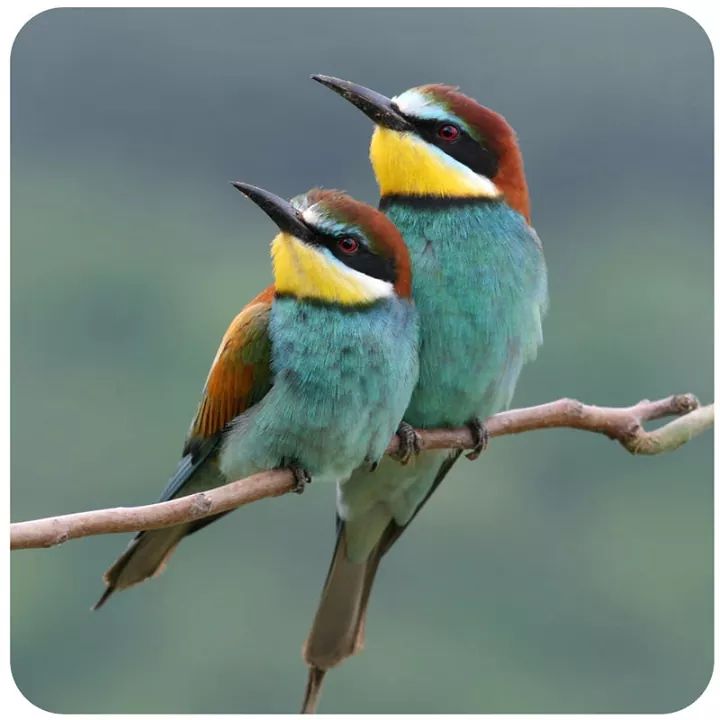
Male birds in Africa have no penis, with only a few exceptions. So, mating for them is not that simple — the male hops onto the female, holds onto her feathers and both (male and female) have vents (openings). Once he is on her, the female whips her tail from side to side so that he can put his vent on hers and transfer his sperm.
- Male and female birds do not have sexual organs, like mammals. Birds have a ‘cloaca’.
This is also one of the important reasons why they are ‘Aves’ and not ‘mammals’.
Over 90% of birds are monogamous (usually mate for life) and this mainly happens in birds, as the male can also feed the young — while in mammals, only the female produces milk to nurse the young.
Birds in Africa General facts
Bird migration is the regular seasonal movement, often north and south along a flyway, between breeding and wintering grounds. As some birds may be known to be migratory, there are also those that remain in the same areas throughout the year. These are known as resident birds.
Bird songs
The sounds and songs made by birds are means of communication within species (intraspecific) and between species (interspecific). This is known as ‘vocalization’ or ‘bird calls’. There are different types of such vocalizations and the main ones are : courtship calls (which precedes mating) territorial calls (to claim dominance of a territory), alarm calls (to alert members of a group of a possible danger), mimicking calls (by brood parasites) and brood calls (Parents to nestlings) among others.
*Since the call of each bird species is unique to it, such is used to identify them to species when they cannot be seen especially when the sun is hot.
Hamerkop General Africa facts

A hamerkop is an African bird that looks like a brown heron, but it is not a heron. This bird builds an extraordinary nest. It is huge for an individual nest — it weighs about 100 pounds (45 kg) and about 6 feet tall!
White Pelican General Africa facts
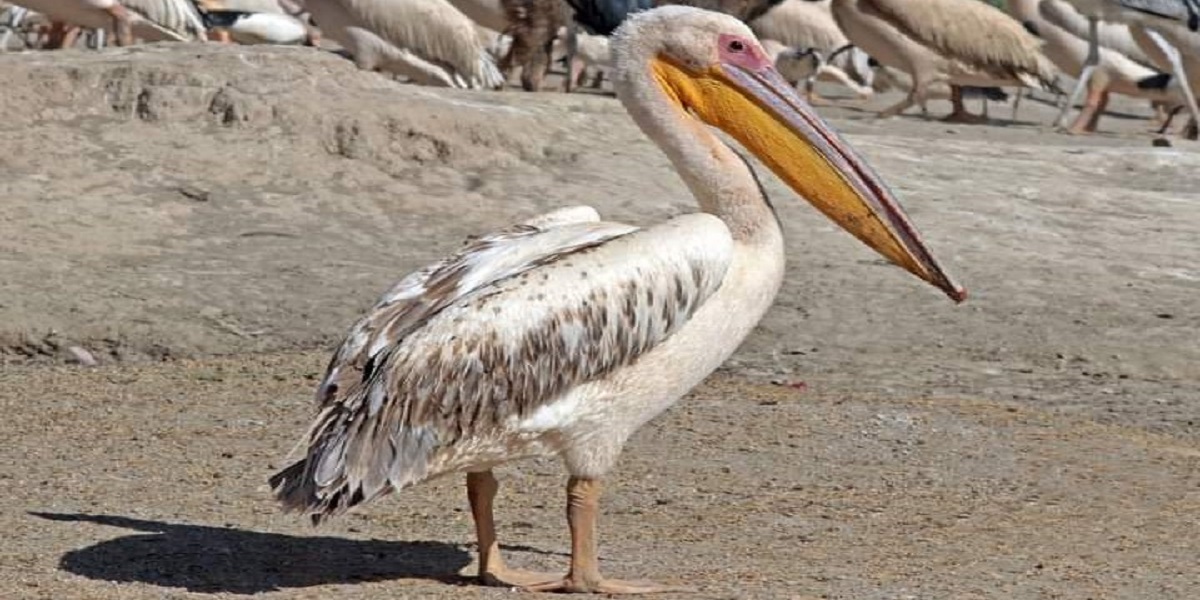
One of the world’s largest flying birds is the great white pelican with a big wingspan of about 3 metres (9.8 feet). 80% of the world’s population are found in Africa — most colonies are found near inland lakes.
It’s also known as rosy pelican, Found in Europe, Asia and also Africa. It’s a migratory water bird…
General Falcon General Africa facts
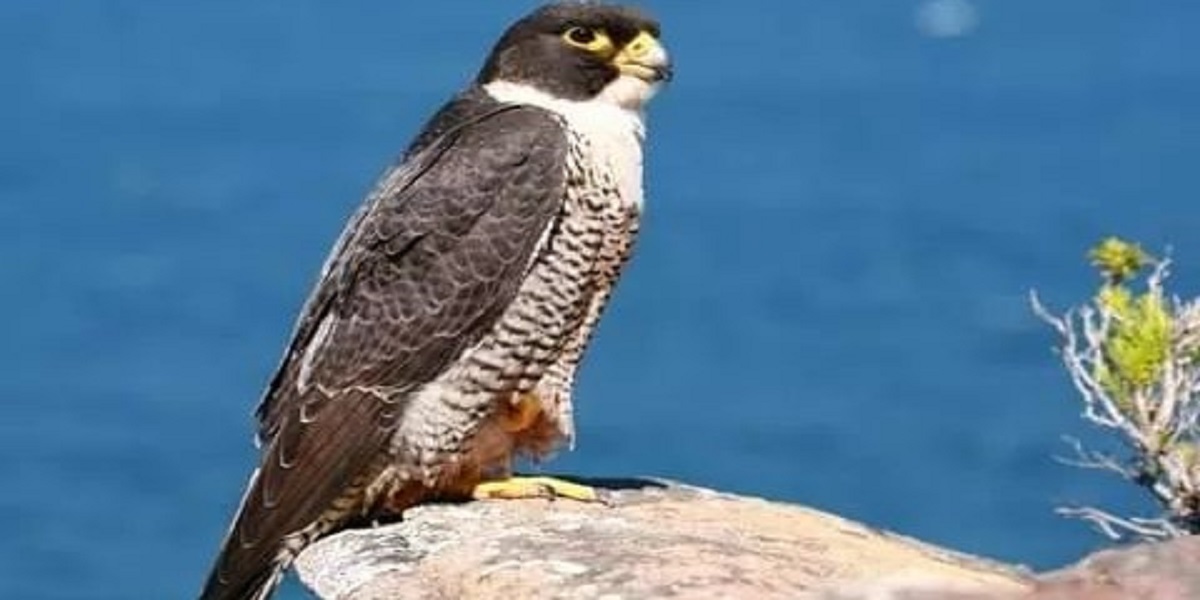
Do you know that falcons are more closely related to parrots than birds of prey. So, for that reason some scientists argue that they are not actually Raptors (birds of prey).
Kori Bustard General Africa facts
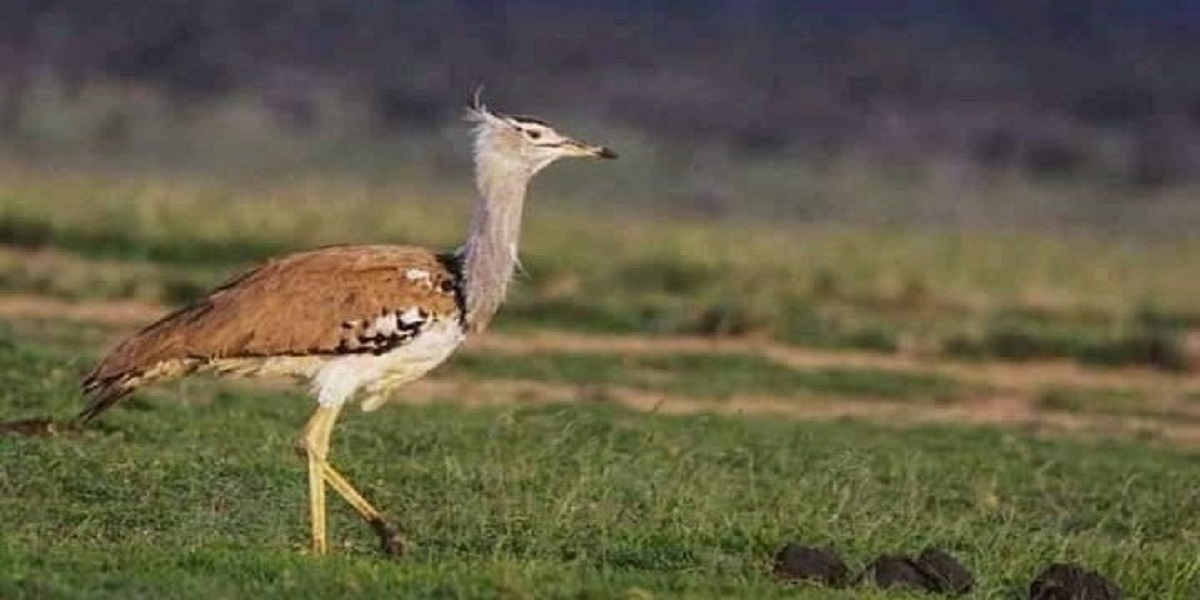
The other heaviest bird in the air weighing about 14kg. Because of its heaviness, it flies only in times of emergencies and for shorter distances only.
While most birds usually drink water by scooping up, Kori bustards suck up the water.
African fish eagle General Africa facts
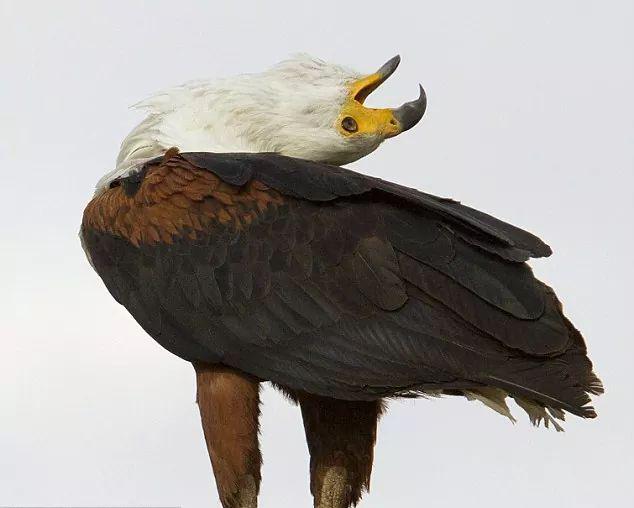
We love the sound of the African fish eagle’s hauntingly beautiful call. Once it has caught a fish they throw back the head and utter that beautiful and loud call. The reason why they do this is to warn other eagles to not come closer and steal their kill.
African vultures General Africa facts
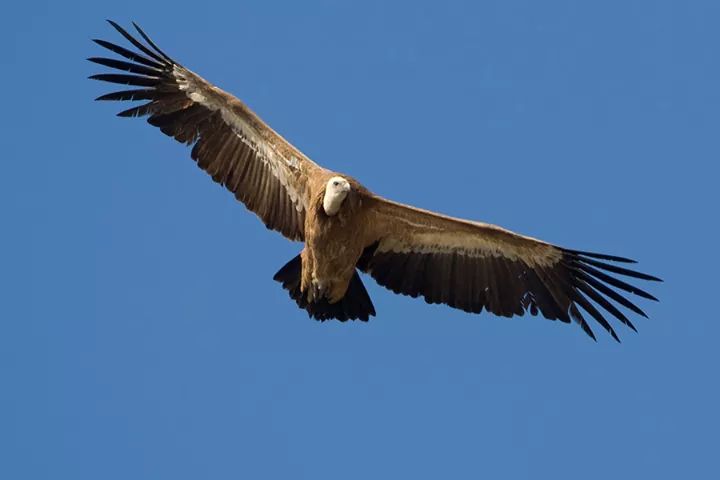
You will often see vultures gliding in the air. Most live in hot places because there are plenty of thermals (which is warm air spiralling up into the sky). Vultures ‘ride’ these thermals soaring in lazy circles in the sky. The reason why you hardly see them flapping passed us like a regular bird in flight — even an Eagle, is because of a good reason. They are poor/bad at it. Therefore, they soar because that is what a vulture is good at 😉
Africa pied wagtail General Africa facts
Africa pied wagtail is a species of bird in the family Motacillidae. Very common in villages. Numerous in Western Kenya.
African Spoonbill General Africa facts
The African Spoonbill lives in marshy wetlands with some open shallow water and nest in colonies in trees or reedbeds.They usually don’t share colonies with storks and herons.They feeds in shallow water,fishes,molluscs,insects and larvae.
African Jacana General facts
They have large feet with long claws which makes it possible for them to walk on the vegetation in shallow waters. For this act, they are known as Jesus birds.
Unlike other birds, the female Jacanas are larger in size and defend the territory. This means that the only female in the territory mates with all the males. They are therefore, ‘polyandrous’.
*conservation status is least concern
The Red-Eyed Dove General Africa Facts
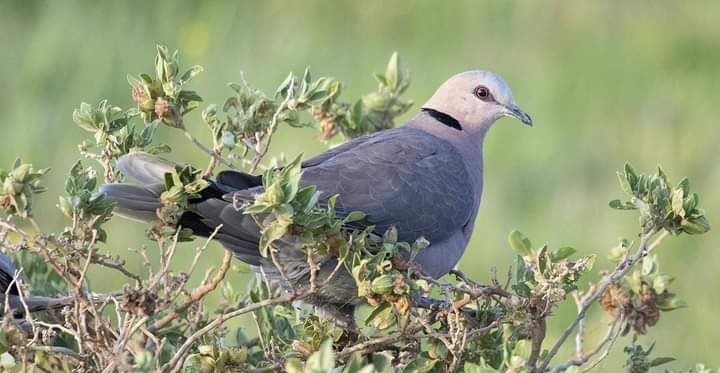
There are several species of doves around us but they are distinguished from one another by their “calls” and names. Generally, birds are named based on their structural features of the body, plumage colouration, calls, habitat, feeding habit or any specific behaviour attributed to a species.
For the red-eyed dove, it was so named because of a ‘red bare skin around its eyes’. It belongs to the same family with the common domestic pigeon — ‘Columbidae’. It’s a granivore –feeds on grains and seeds.
This dove is intelligent, it perches and forages where it will have a clear sight against predators, including humans. They are monogamous and lay only two eggs on a stick nest, all year round. The call of this dove is in 6 notes as: do-do du-du doo-doo.
Doves and Pigeons General Africa facts
Do you know that Doves and Pigeons are monogamous? Yes! They only have one mating partner throughout their lives. They mourn the death of their mating partner for some months and some may end up not having a new mating partner again. When next you see two doves or pigeons, note that the bigger one is the male. Both Doves and pigeons belong to the same taxonomic family: Columbidae. They feed on seeds and grains, hence they are ‘grainivores’. Their nest is made from sticks and they lay only two eggs.
- An extra tidbit to calm some confusion. Essentially, they are the same bird, but the bigger are usually called pigeons and the smaller — doves. It is a bit murky, because it really depends on where they are found and by what people choose to call them, for example, the same bird is called a dove in France, but a pigeon in Germany. See, it can be confusing!
The majestic Gray Crowned Crane – General Africa facts
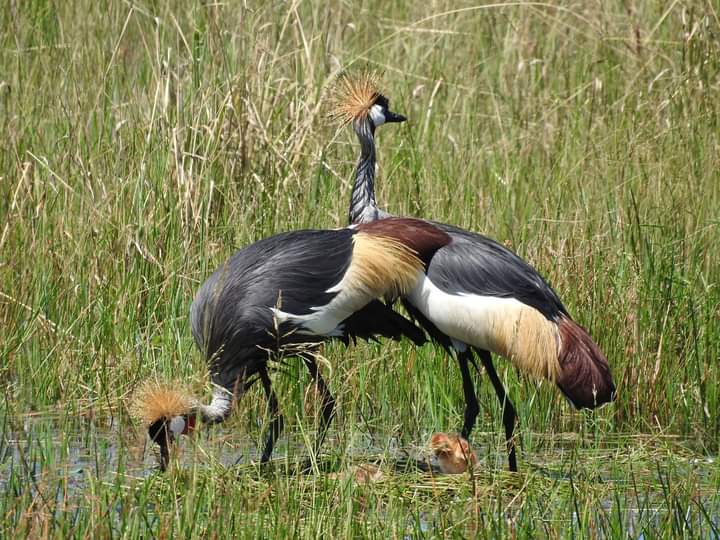
This bird is truly majestic due to the beautiful crown it carries and the distinctive bright colours it wears. Their beauty puts them at risk of being traded by wealthy
people for pets.
The Gray Crowned Crane is the most ancient of the 15 species of cranes currently. There are two subspecies — the Eastern Gray crowned crane found in Kenya and Uganda and the Southern Gray crowned crane found in Zambia and South Africa. It is the national bird of Uganda.
It is monogamous and breeds at rainy season when its habitat, the wetlands are less accessible to predators. This beautiful bird feeds on grasses, millet, insects, frogs, hence, it’s an omnivore. It is 3 feet tall (known as the tallest flying bird) and weighs about 3.6Kg (8 pounds).
*They are currently endangered
Ground Hornbill – General Africa facts
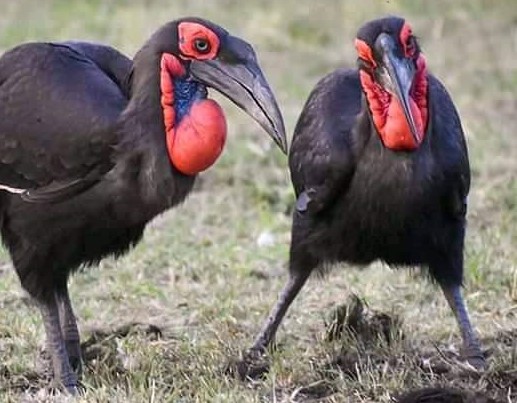
A ground hornbill is a large bird, and boasts a wingspan of 1.8 metres (6 feet). They are seen mainly on the ground, but are actually pretty good fliers and when they spread out those great wings (sometimes on the ground) we only then notice the concealed (hidden) white feathers.
Did you know that the Southern ground hornbill can live up to at least 60 years?
Falcons General Africa facts
Falcons are absolutely brilliant at adapting to their surroundings, so these exceptional birds are found in many different habitats and are found on every continent, except Antarctica.
Common Emu
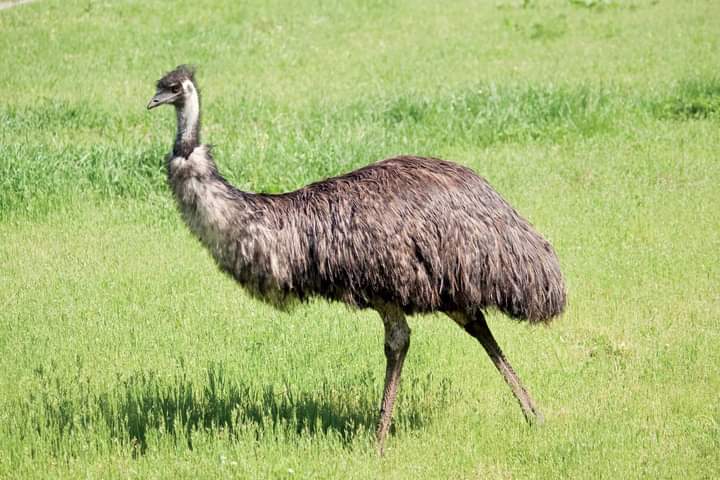
Common Emu is the second largest living bird (only after Ostrich) on earth. It is a flightless bird but runs up to 50 KM/hour (30 miles). They cannot walk backwards but it’s not known why?
It’s an omnivore and endemic to Australia (also found in Indonesia and Philippines). Some are kept in captivity in Kano Zoo, Nigeria, recently. It’s is the only bird species that has calf muscles.
Mating partners stay together for about 5 months but the eggs are incubated by the males for about 7 weeks without feeding, drinking or leaving the nest. The chicks are taken care of, by the males for about 4 months before they begin to feed themselves.
- They are currently ‘least concern’ on the IUCN list.
Innate change of sex roles in birds General Africa facts
Apart from their roles as bio-indicators of the environment, birds could also be used as models to understand the dynamics of nature in terms of behavioral studies. For instance, the building of nest of two groups of birds — the Weavers and the Warblers is summarily discussed below:
For the Weavers, the males build their nest and the female chooses a male for mating based on the beauty of the nest built. Yes, the female chooses and get enticed on the basis of the architectural intelligence of the male. It takes them about 2 days to build a nest.
For the Warblers, the females build their nest — unlike the Weavers. The males may accompany the females or protect the nest, but they don’t help them in building the nest. It takes them about 4 days to build a nest.
This trait of different sexes performing same reproductive duties is INNATE/INBORN.
*Every animal has innate characters unique to them. However, there are several “learned characters
The Friendly ‘Cattle Egret’ General Africa Facts
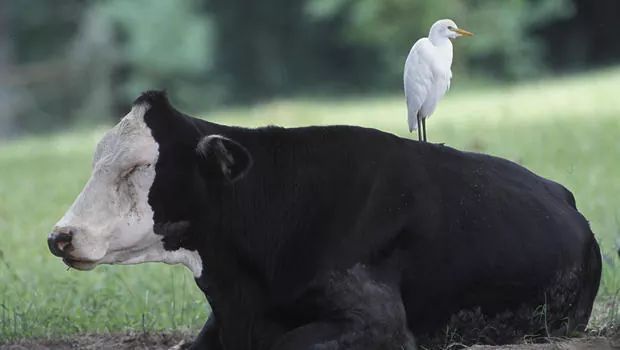
The friendly cattle egrets are migratory birds and found all over the world. Their population is currently increasing, hence they are ‘least concern’ in the IUCN list of species.
Though, named after cattle, which they follow around, they also follow other grazing herbivores in grassland, savanna and woodland vegetations. They feed majorly on insects, but also eat lizards, frogs and worms. They exhibit a symbiotic feeding relationship with cattle and other grazing herbivores known as ‘mutualism’.
As the cattle graze along the vegetation, their movement raises insects to fly around which the egrets feed on as an advantage. On the other hand, the egrets helps the cattle by eating up flies that are pecking on their skin, including ticks which sucks the blood of the cattle. Since both egrets and cattle benefit in the process, such association is termed ‘mutualism’.
The ‘stinkbird’ General Africa Facts
Leaves are made of cellulose, and cellulose is difficult to digest. Leaf eaters have to load up with bacteria to help digest this tough material. Hardly any birds eat leaves as the fermentation process will make them too heavy to fly, but some birds have — like the hoatzin, of South America. Like cattle that have a fermentation stomach, this bird also has a lot of digesting bacteria, but it stores this helpful colony in its large oesophagus and crop (throat area). It takes about 2 days for a leaf to work through the body and the end result is manure-like droppings/dung, giving it the name of ‘stinkbird’.
- Listed as ‘least concern’.

